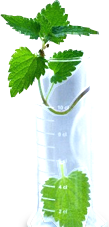



Author(s): M.S. Rathore*, Y. Srinivasulu, R. Kour, Anil Dhar and K.A. Sahaf
The Kashmir valley represents temperate climatic conditions and is known for its bivoltine sericulture. The sericulture in the region however, sustains on tree type of plants. Majority of sericulturists in this traditional area have taken up mulberry cultivation on small land holdings as a life sustaining occupation. Other farmers with more land have taken up it as subsidiary occupation. Mulberry is facing stiff competition from other economic crops. In order to make the mulberry cultivation more profitable and sustainable, intercrops can be practiced with them. Medicinal plants like Lavendula officinalis, Atropa belladonna and Echinacea purpurea are important source of alkaloids and essential oils, which have huge demand in pharmaceutical industry. The wider spacing available in the tree type of plantation of mulberry facilitates the cultivation of these medicinal plants as an intercrop. The present paper focuses on utilization of medicinal plants as an intercrop with mulberry to generate an additional income to the progressive farmers as the biochemical studies shows that there is no significant impact on mulberry leaf quality and soil health.